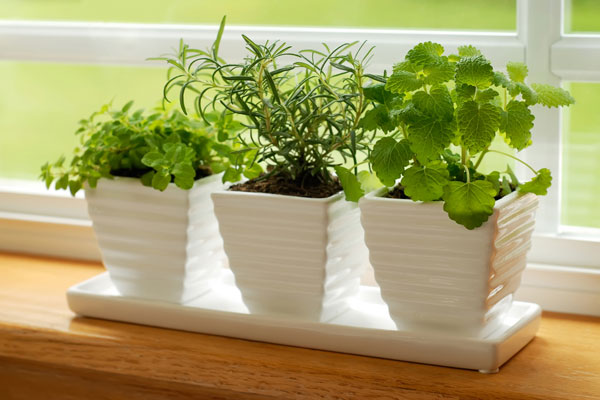How to Start an Indoor Winter Garden

Indoor garden photo via Shutterstock
If you’re a fruit and vegetables lover, you’ve probably gotten a little too well-acquainted with the Whole Foods produce section. But this year, why not take matters into your own hands? Growing your own produce and herbs indoors is a great way to complement grocery store and winter farmers market trips, and you don’t need a green thumb—or an enormous budget—to do it right. Plant these crops in your house or apartment this winter and reap the benefits through spring.
Herbs
Herbs are by far the easiest things to grow inside, and you’ll put them to good use if you’re a cook. Basil is probably the simplest of all—just plant a packet of seeds and place the pot next to a south-facing window for maximum sunlight. If you buy cuttings of oregano, parsley, thyme, or rosemary and plant them in a small pot, they’ll also grow well near a south-facing window.
Root Vegetables
Round varieties of carrots and radishes, which tend not to root as deeply as other varieties, do well indoors if their seeds are sewn at any point from late winter to mid-autumn. All you need is a box, trough, or pan to get started.
Mushrooms
If you have a dark, draft-free place like a pantry or cupboard, it’s possible to grow mushrooms with ease. You can buy special bags of compost with mushroom spawn already included—just water the soil and leave it in your dark place, preferably with the temperature set between 50 and 60 degrees.
Leafy Greens
Growing plants like lettuce, spinach, and arugula indoors is a slightly more involved process, but by no means impossible. Since leafy greens require a bit more sunlight than the short winter days produce naturally, your best bet is to invest in fluorescent grow lights. Though they can get a little pricey, the lights will ensure optimum growing conditions. Just plant your seeds in moist potting soil, water regularly, and leave the grow lights on for 10 to 12 hours a day.
Tomatoes
No more mealy tomatoes for you! If you’re willing to put in a bit of extra work, you can grow small types of tomatoes inside. You’ll still need to stake the plants so they can bear the fruit’s weight, and most plants will need to be transferred from a small pot filled with starter mix to a larger container of potting soil as they grow, but the end product is well worth the chore.


